This post may contain affiliate links. Please read our disclosure policy.
Figuring out how to organize kids’ toys is essential not only for your sanity but for the sanity of your kids, too. Did you know that clutter makes people feel more stressed? In the same way, when things are free of clutter, clean, and organized, it reduces stress.
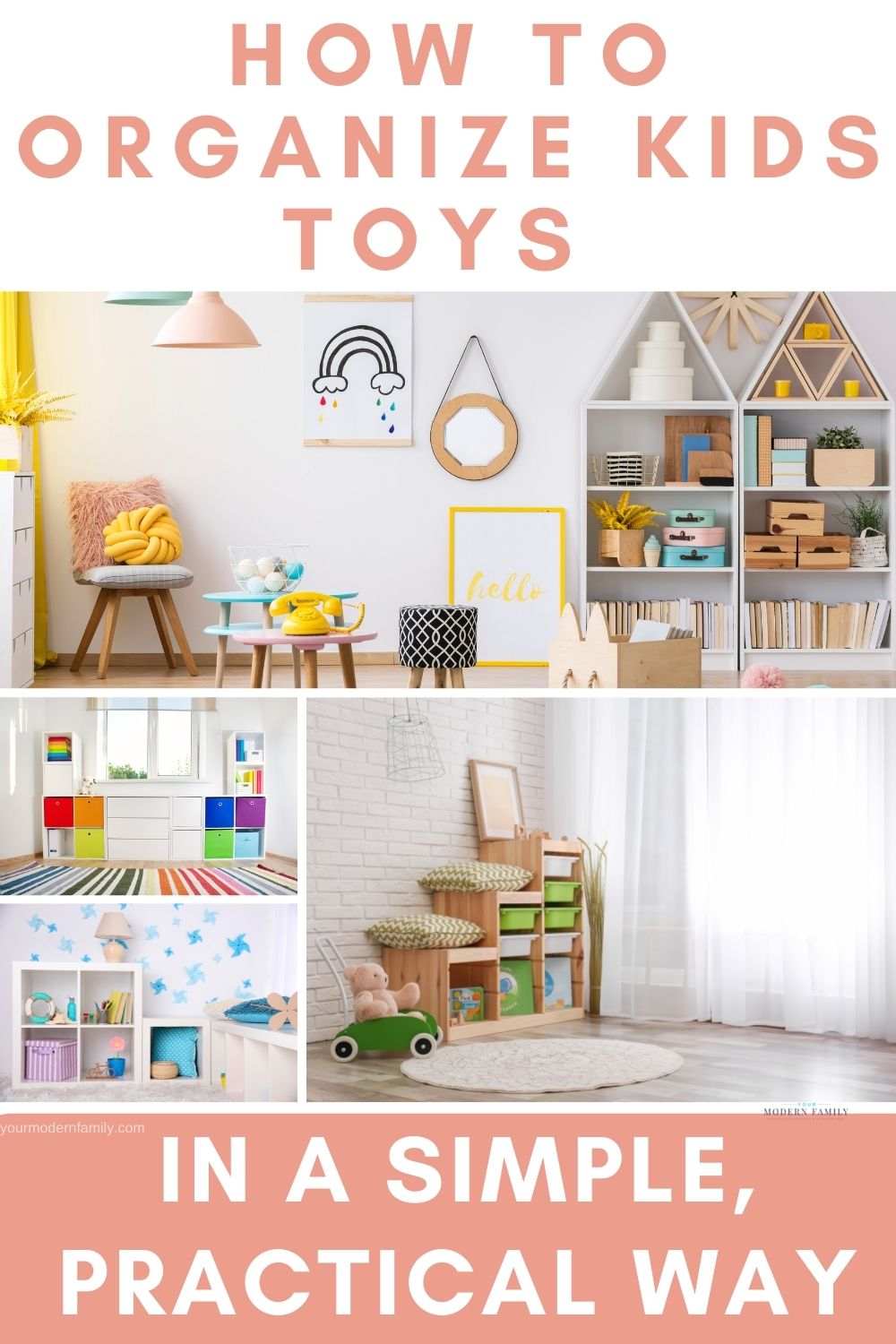
The goal of organizing toys is to give kids a chance to see what they want to play with what they have rather than continuously wanting new things. It is also to teach them to be responsible for what they have by keeping it clean, together, and in a safe space when they are not using it.
Why Toy Organization is a Problem and How to Fix it?
Kids are often getting new toys. They receive them as presents, rewards, and they even buy them with their own money. The problem comes in when they don’t even know what they have because they have so many toys and little organization.
Kids lose their toys, accidentally break them (if they are thrown into a toy box or tossed into the closet), forget about them (out of sight, out of mind), and before you know it, they are asking for something new.
If kids don’t have a way to organize their toys, they won’t know where things are to play with them. Children love to play, so it’s important to teach them how to store their items well so they can play with them for years to come.
It’s time to get toy clutter under control...
Organize Your Child’s Toys in a Way That Will Leave You Calm and Stress-Free
Kids’ toys and child’s play are a loaded topic for many parents. While some parents feel that toys are a vital part of a child’s development process, others think the minimalistic approach is best. I fall right in the middle.
I think toys are beneficial, fun, and helpful to children in many ways, but I also know that too many toys can be distracting, frustrating, and confusing.
Several studies found that messes and clutter can lead to stress, frustration, and depression for adults.
Having too many toys to choose from can overwhelm children. It’s one reason that I like non-toy gifts.
Today we are talking about simple solutions & practical ideas that will help you & your family organize kids’ toys… and keep it that way!
How to Organize Kid’s Toys
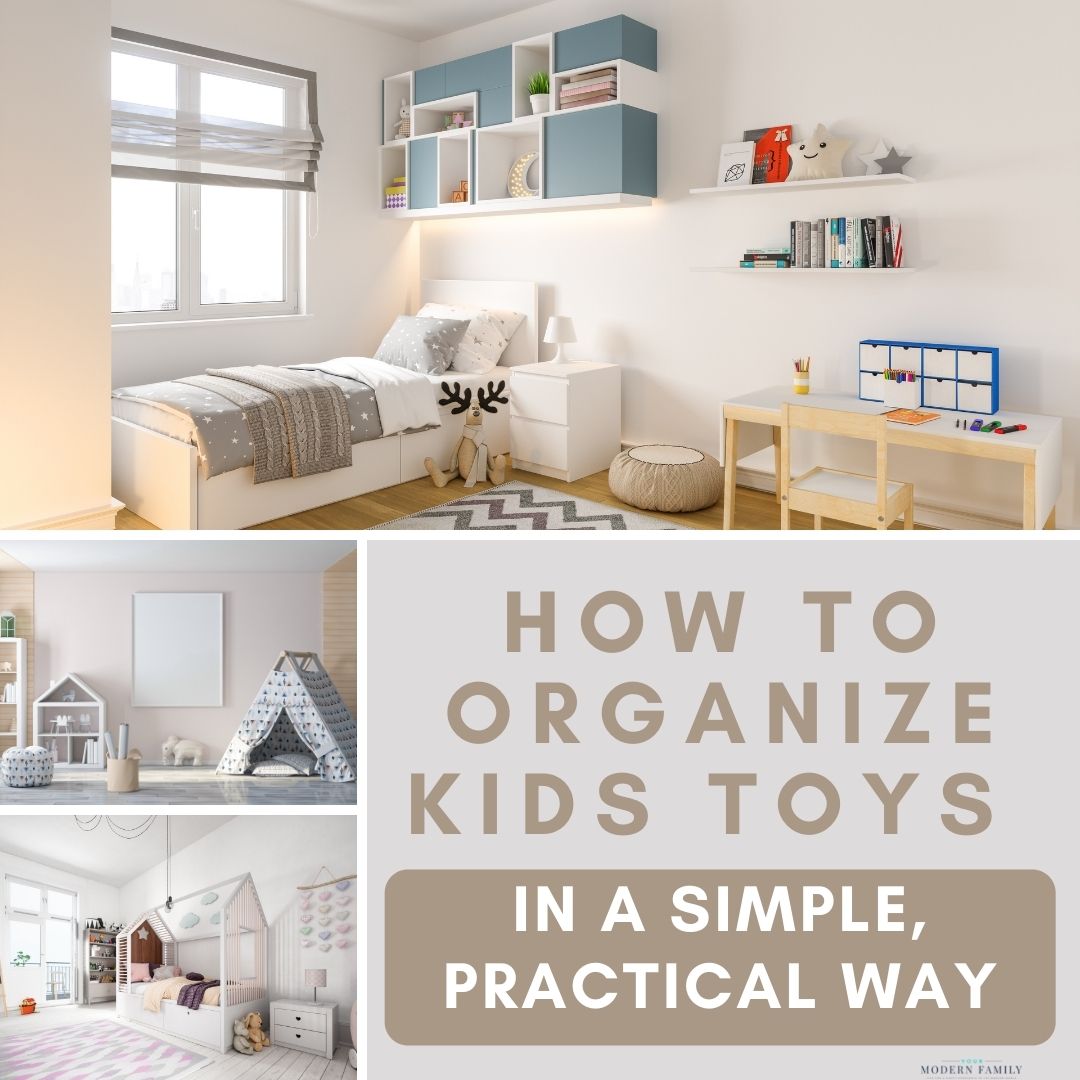
Step 1: Declutter the Home by Tossing, Donating, Organizing, or Rotating Toys
The first step is to collect and sort the toys into piles:
1- playthings that will stay in the toy room or be rotated (more on this later)
2- playthings that can be donated
3- playthings that need to be tossed.
If your children have outgrown a toy or set of toys, then it might be time to donate it. If you have more than one of a particular type of toy, donate the extra!
Get your kids involved in donating. Donating your kid’s toys not only cuts down on the clutter, but it teaches your children the value of giving to others.
You would be surprised how quickly your children will jump into the spirit of giving when they realize that their toys are going to a child who might not otherwise afford it.
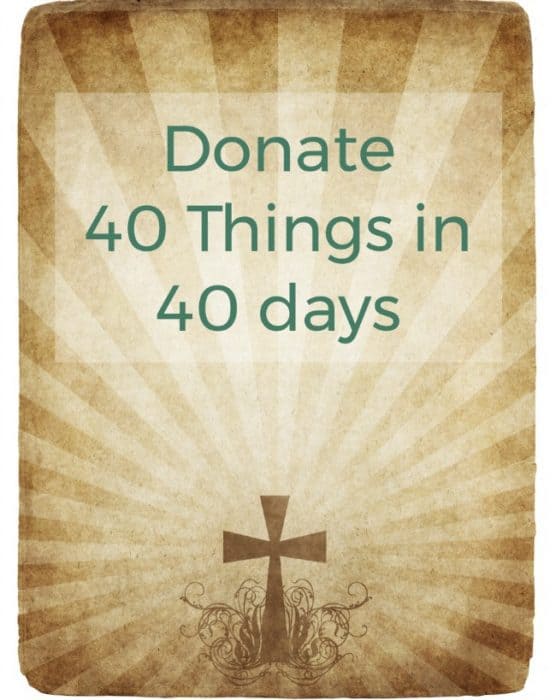
Step 2: How to Create a Toy Rotation System That Works for Your Family
Rotating toys is great! Similar to when you put your seasonal clothes away, choose a few toys that your children haven’t played with recently. Fill up a large clear tote box with these toys (so you’ll be able to see what’s inside).
Label the boxes (even the clear totes, so you can quickly read the label) and pack them away somewhere that you can get to them quickly, such as your attic or garage. When your children become bored with the current ‘favorite toys,’ grab one of your rotation boxes, unpack it, and refill it with the current toys. You are swapping one group of toys for another.
The box you just brought out is filled with toys that the kids haven’t seen in months, so they feel new and exciting again!
Step 3. Invest in Practical Storage!
If you are looking for some great toy storage ideas, don’t try to reinvent the wheel. Stick with what works, like a bookcase, storage cubbies, or shelving.
Toyboxes and toy trunks are great, but as our babies grew, so did their toy collection! We want them to be able to see their toys, use them, and put them back easily and quickly. This means not digging through a toy box trying to find parts, pieces, etc.
Adding shelves or cubbies to a kid’s bedroom is a great way to add storage space and make the toys more accessible for the child. This is a simple idea that is budget-friendly. If the shelves are low enough, the toys become easily accessible, which kids love. They can use reach the toys, play with them, and put them back with the other stored toys when they are done.
I love these storage cubbies from Amazon because they are easy to build, come in almost any color, and you can organize toys for multiple ages (like if the children share a playroom or if you want to keep it in the family room).
This 20 bin organizer is great, too, because it holds so much & lets you organize it into different sections.
Step 4. Use Clear Bins or Baskets for simplicity.
Often, children only want to play with toys that are in plain sight. This is why clear storage boxes, bins, or baskets make toy organization easier.
Clear containers are helpful because children can see what’s in the bin. This also helps to encourage them to put their things away when they’re done playing – it is easy to see where they go.
Clear bins also make it easier for kids, parents, and teachers (if used in a classroom) to know when they need to do a quick cleanup at the end of the day.
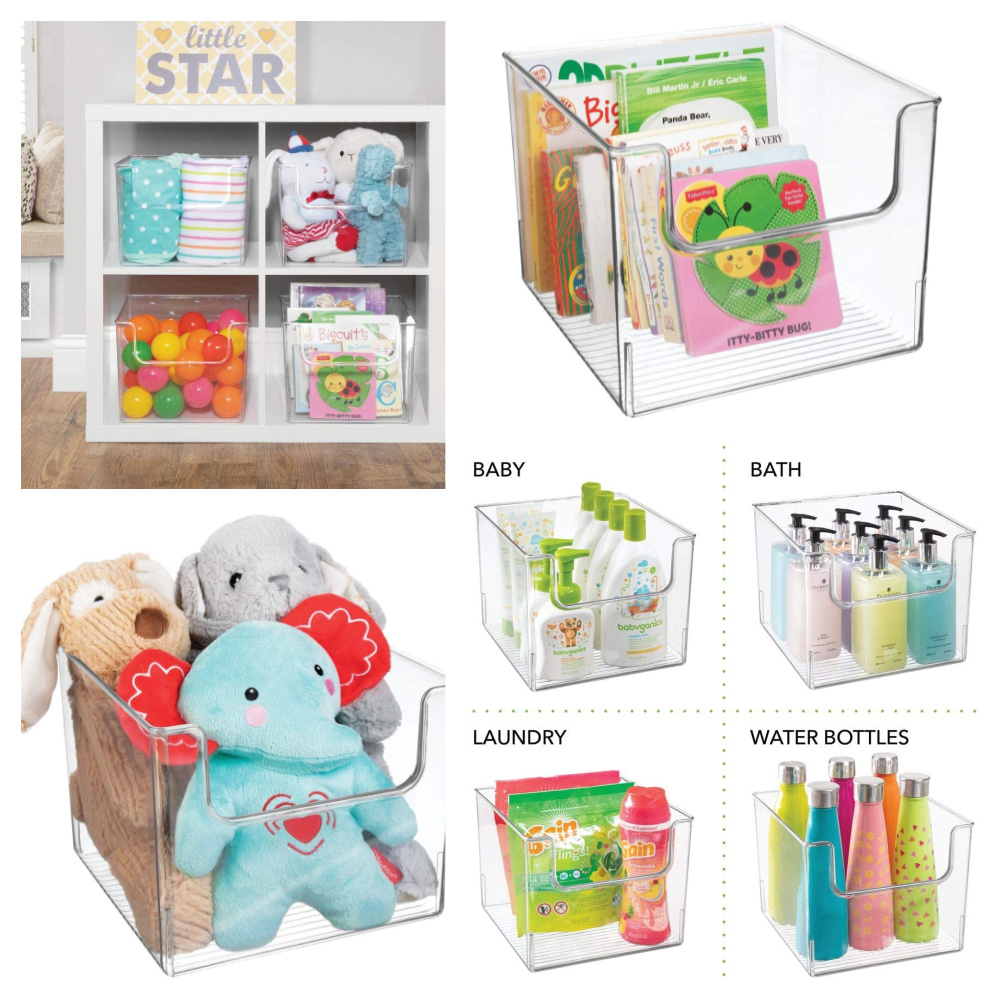
Step 5. Why Organizing Kids Toys by Groups Works
Take some time to think about what toy groups your child would enjoy or what storage methods might work best for your needs.
If you have many toy sets, you can organize them into groups. For example, you can group “like” items together.
Example: Put dolls with dolls’ accessories, art crafts go in an art supply bin, small toys together, stuffed animals together, toy cars & vehicles together, board games in a bin, and put all the puzzles into one box (I put each puzzle set into little zip-lock baggies & then I can toss all of the bags into one bin/box to store).
Storing them together helps your children find & clean up their things quickly. Organizing kids’ toys according to “like” groups is the easiest way to help kids learn how to clean & organize their toys.
Not only is this going to help you both when you go to play together, but it will cut down on those missing pieces from every single toy set.
Step 6. Make Cleaning up toys a part of your children’s routine.
It is important to teach children good habits and routines from an early age, including cleaning up after playing. This will help you avoid having a messy house now and develop organizational skills that will be helpful for your children later in life.
We found that introducing chore cards was very motivating to our children.
We especially like swapping chores for screen time. This teaches them that if they want to play & have free time, they have to be responsible (work before play.)
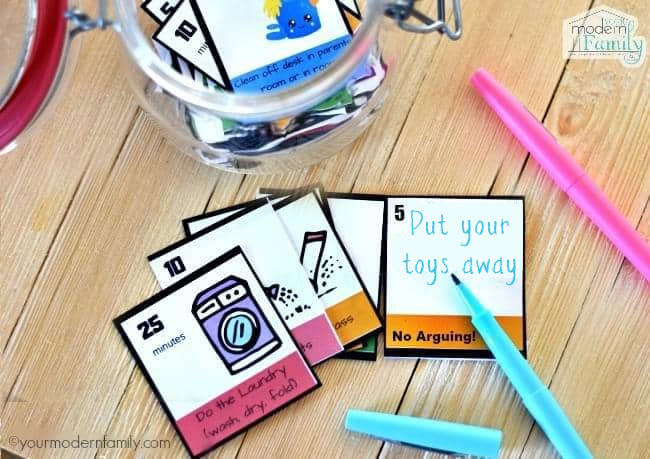
Children love routine, and it’s not that they don’t want to help (in fact, most children want to help all the time), but they are also willing to move on to something else if they know that someone else will clean up their mess for them.
The best way to teach children to clean up after themselves is to make it a part of their routine. Either a routine based on a schedule, like cleaning up before bed or a routine that is based on an activity, like when you finish, clean up before leaving the space. You can even write it out on a routine chart.
Establishing a routine will ensure that your kids learn how to clean their room and put things away independently. This will save time for you while teaching the children to take responsibility for themselves.
Step 7. Make Cleaning Up Toys Fun!
As a former teacher, I can tell you that the age-old trick of setting a timer can do wonders for cleanup time.
Setting a timer can make toy pick-up more like a game or a race. It can make it seem manageable, too. I’ll often tell our kids that we are going to spend “Ten minutes putting away as many things as you can.”
To make it more of a game, let them count the items they pick up to see how many they can get. Try saying, “I bet you can pick up 20 toys!”
Another game variation is to see who can pick up the most of a particular toy or keep their play area the neatest during play.
Step 8: Be Realistic
I try to remember that our kids are kids. This means that they play, they are creative, and they make messes. While I do like our house to be clean, I also know that if they are in the middle of something and it’s time for bed, I’ll tell them just to clean up when they finish.
Example: If they are making a friendship bracelet & need to leave the beds out, it’s fine. If they are building a LEGO house & need to keep the LEGO bricks out, no big deal.
How To Keep Your Kids Toys Organized – for good!
You can organize your kids’ toys multiple ways, but the downside is that once you’ve organized it, you have to maintain it, or else things will get messy again in no time at all!
Organizing children’s toys creates order in the room and enables children to manage their time more efficiently by choosing how they want to spend it.
For example, if there are two activities available, one that takes ten minutes and another that takes an hour, the child would be able to decide based on their current mood or time.
If you want their area to stay organized, be sure to add “clean up” time into your day.
Sign up for our newsletter if you want more tips on creating an organization system with minimal effort!
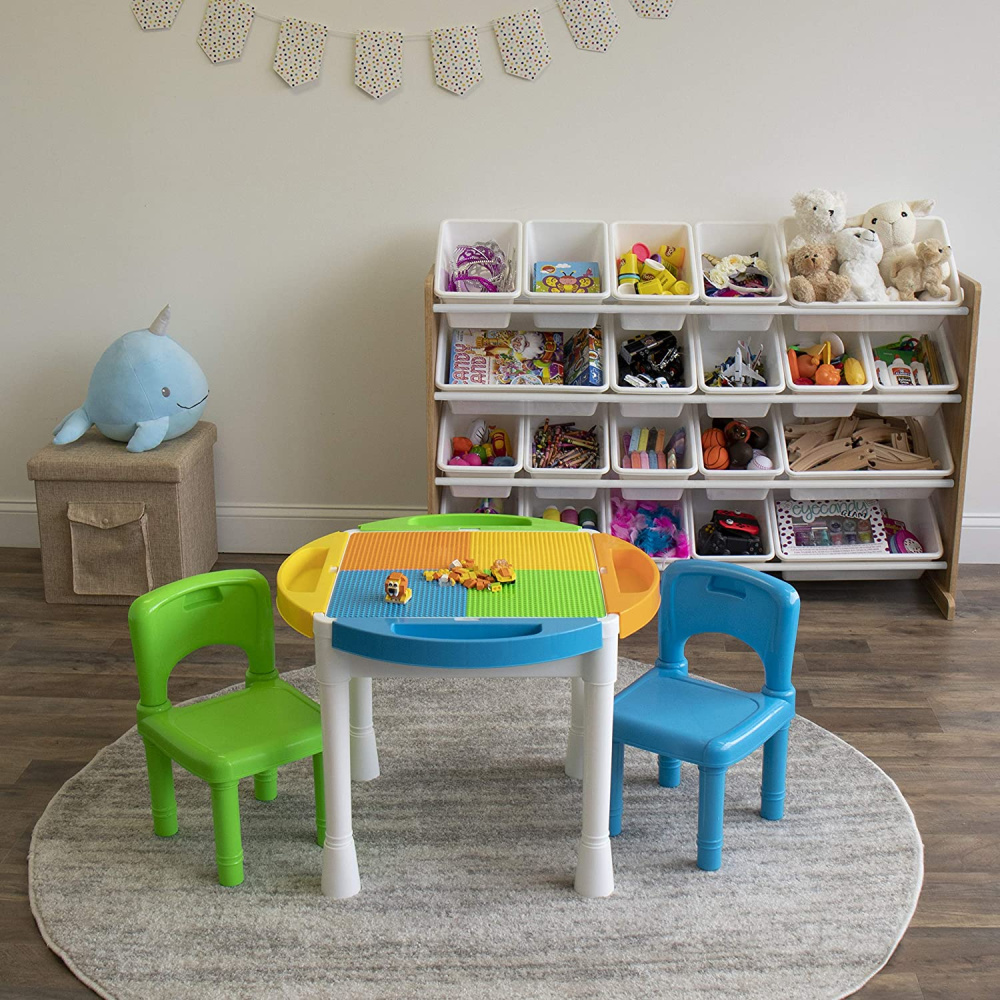

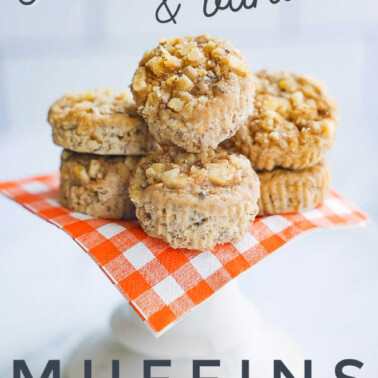
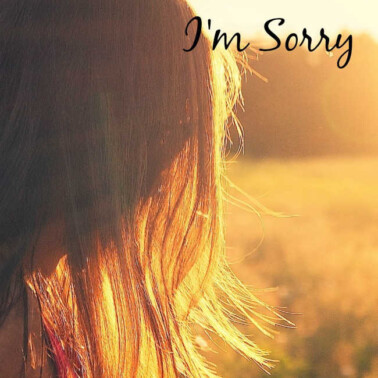
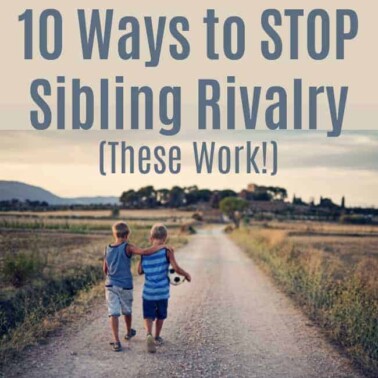










I remember trying to get my kids to put away their toys. It seemed that their rooms were always messy. But they grew up thankfully and now they even make their own beds. Thanks for a great post.